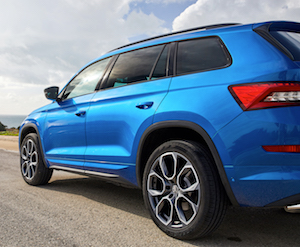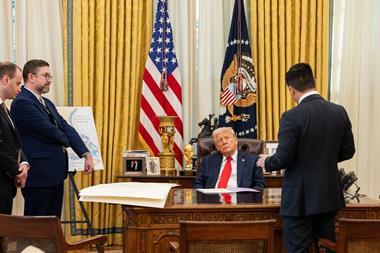 The growth in Russian vehicle exports during 2018 could be in jeopardy if a new bill to ban Russian vehicle imports is passed by the government in Ukraine, one of the biggest sales markets for Russian-made cars.
The growth in Russian vehicle exports during 2018 could be in jeopardy if a new bill to ban Russian vehicle imports is passed by the government in Ukraine, one of the biggest sales markets for Russian-made cars.
According to figures from the Russian Federal Customs Service, in the first nine months of 2018, vehicle exports from Russia climbed to 66,000 units, 3.7% up on the same period the previous year. The biggest exporters are Avtovaz and Volkswagen, while the biggest sales markets, according to the Russian Industry and Trade Ministry, are Latvia, Ukraine and Azerbaijan.
However, in terms of value, vehicle exports from Russia in the first nine months declined by 10.7% to $910m compared to the same period of the previous year. That could be down to weak sales in Europe where the cars sell for a higher price. In 2017, VW was exporting the Skoda Yeti SUV from its plant in Nizhny Novgorod to the European Union. That stopped this year when VW began making its successor, the Karoq, at its two plants in the Czech Republic.
Volkswagen earlier reported that it was aiming to export 10,000 Skoda Yetis from Russia in 2017, although the carmaker has not unveiled how many cars have been actually exported.
Despite the drop in value, the Russian Export Centre (REC) has estimated that exports from the country, including vehicles and automotive components, could increase by 10% compared to last year and reach $3.3 billion in 2018, showing how important parts exports are. It is even possible this figure could reach $3.5 billion. The REC also said it believed automotive industry exports would keep growing in the future.
Obstacle to progress?However, that growth could be dented by new sanctions. The Ukraine parliament has recently registered a new bill that, if passed into law, would ban all finished vehicle imports from Russia to Ukraine.
The decision has been taken following a clash between Russian and Ukraine warships in the Sea of Azov in late November, which drove tensions between the two countries to their highest point since the annexation of Crimea. Ukraine’s President Petro Poroshenko has introduced martial law in the eastern part of the country.
In 2017, Russia exported 3,800 finished vehicles to Ukraine. It was then the second biggest sales markets for the country after Czech Republic, where last year 16,700 finished vehicles were delivered. However, as indicated above, export volumes to Europe have declined since VW moved its Yeti production to Kvasiny, amongst other reasons. Almost all finished vehicles exported to Czech Republic last year were exported by VW. This year there is no export. The third biggest sales market for Russian cars in 2017 was Latvia, which imported 3,500 vehicles.
Exports to Ukraine and Latvia have been growing in 2018, although no official statistics are available yet. Some reports indicate that Russia is exporting vehicles to the rebel republics in the east of Ukraine and these supplies are not reflected in the statistics of the Ukraine customs service. None of the carmakers, however, have confirmed that these supplies actually existed.

































